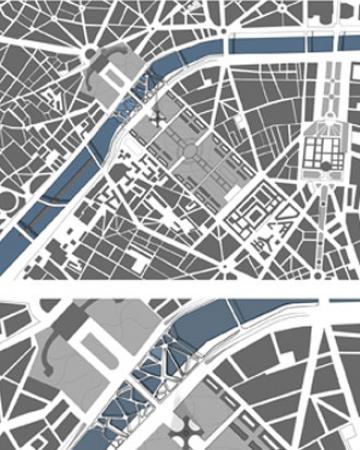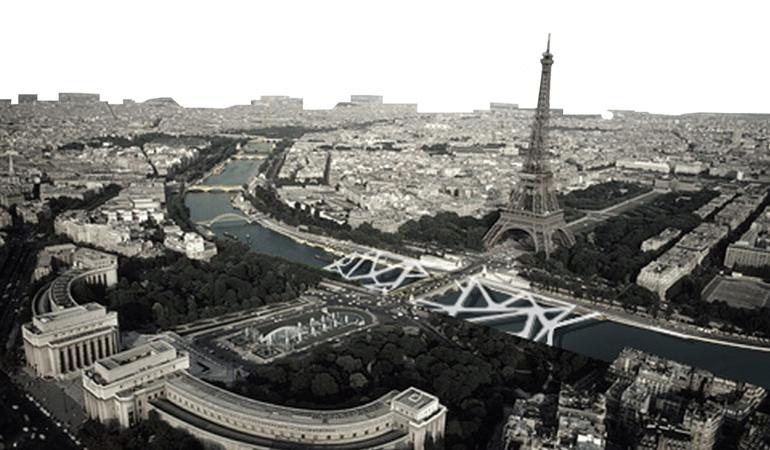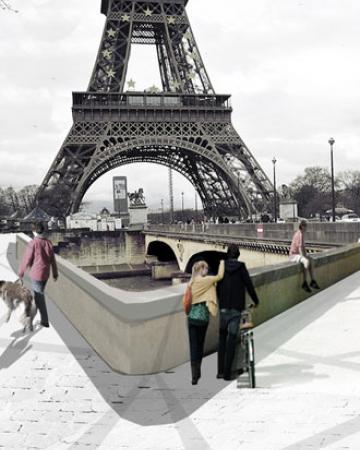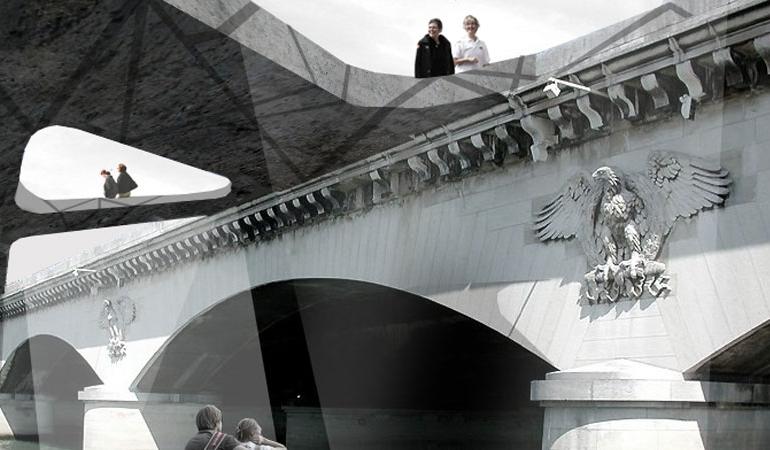




The immense cultural nature of Paris and its presence as the diverse hub of France. The urban carpet ‘Champ de mars’ iconically positioned on the Seine River amongst other carpets scattered around the city is prominent and powerful onsite; Established In the exposition universal of 1900 to celebrate the achievements of the past century and to accelerate development into the next.
Champ de mars urban carpet consist of the palace de chaillot, jardains du trocad’re on one bank, the Eiffel tower, Champ de mars on the other bridged by Pont d’lena that connects the two banks. As significant as both banks appear, the bridge seems fragile in comparison and narrows the connection between two dominant sides, sides which house a vast number of tourists, activities and world renowned events.
The design seeks to unify and continue this urban carpet by creating an augmented and defined circulation network, effectively connecting both banks, with a shape that is borrowed from Paris’s standard urban system/ texture. The design structure follows a similar urban pattern and seamlessly merges within its context. The minimal form continues the urban carpet with minimum impact on the Seine and on the existing Pont d’lena. It extends the plaza in front of the Eiffel tower to meet in an elevated platform, which resolves in its form the issues of crossing and connectivity, as well as acts as an additional urban layer that creates open public spaces for the visitors and passersby to benefit from. The bridge physically interconnects two vital areas which in the context enhances the social interaction as well as engages with the water’s edge to celebrate the river, the views out to the city Paris and the history of Champ de mar’s urban carpet.
The contemporary, bridge design acts as a strengthening bond between the two historical banks of Camp de mars, Paris. It continues the main axis along the urban carpet horizontally between the two sides and vertically between the bridge and the pier. This uninterrupted connection adds to the celebratory experience from above and below. The bridge’s design has minimal interference with its surrounding environment due to its chord like web shape but great influential presence. Its shape consists of chords that create a network of platforms interrupted by interactive nodes. Some appear on the same level; where activities take place at intersecting points, others, sink in creating a plaza for visitors to gather and for events to take place.


